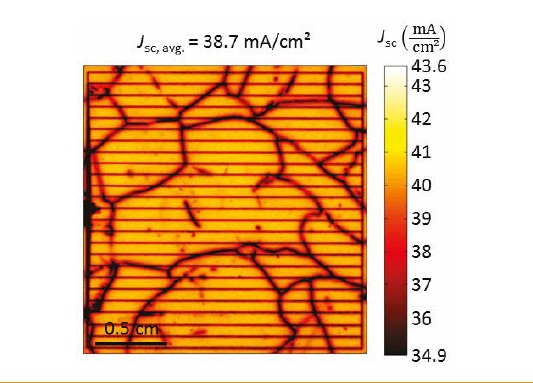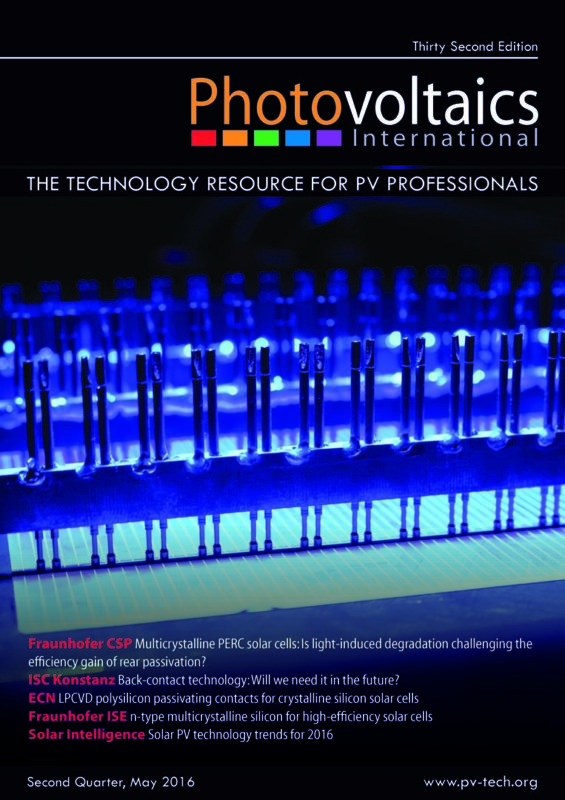By Stephan Riepe, Patricia Krenckel, Florian Schindler, Martin C. Schubert & Jan Benick, Fraunhofer Institute for Solar Energy Systems (ISE), Freiburg, Germany
High-efficiency silicon solar cells require silicon wafers of high electrical quality as the base material. One advantage of n-type compared with p-type doped silicon is the smaller impact of many metal impurities on
the electrical material quality. This applies especially to n-type multicrystalline silicon ingots produced by the directional solidification process, with dissolved metal impurities typically introduced by the crucible system.


